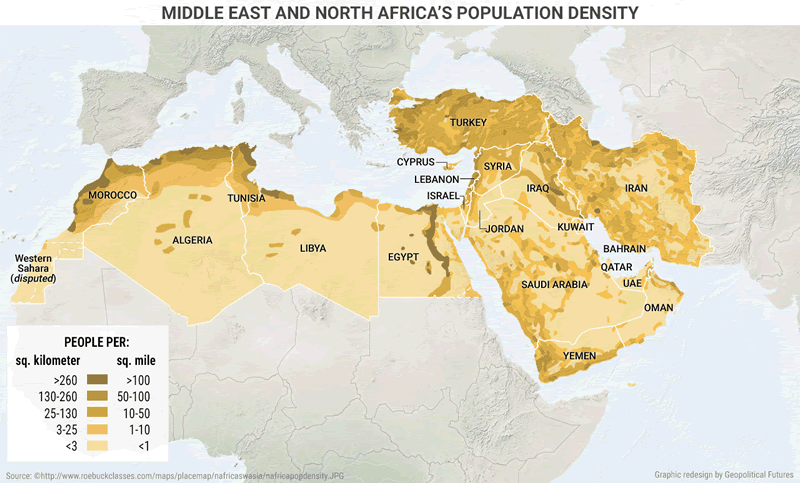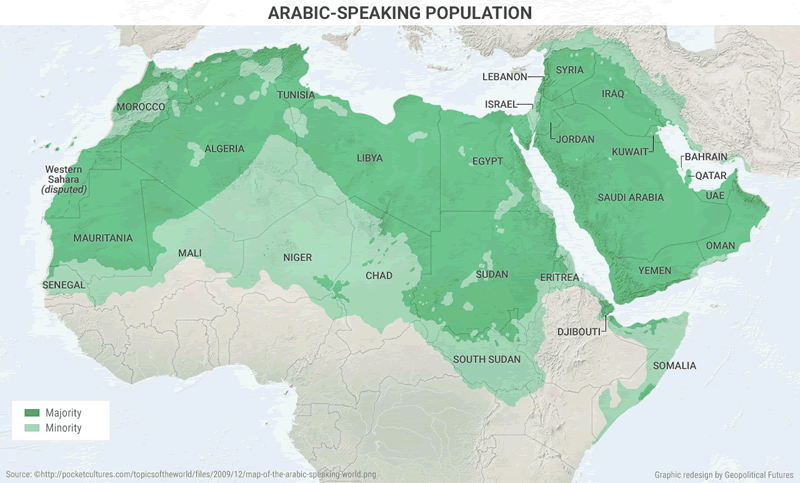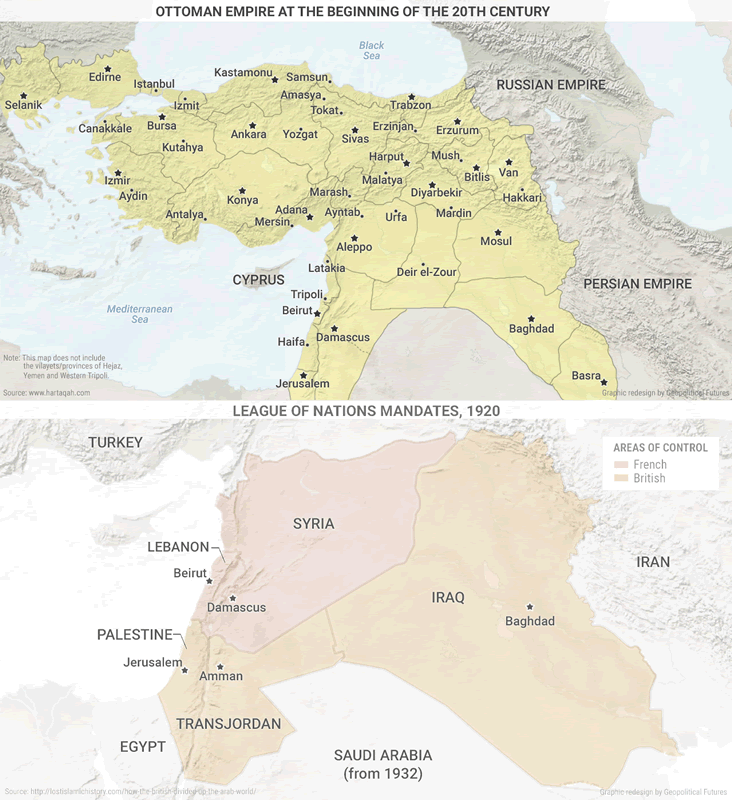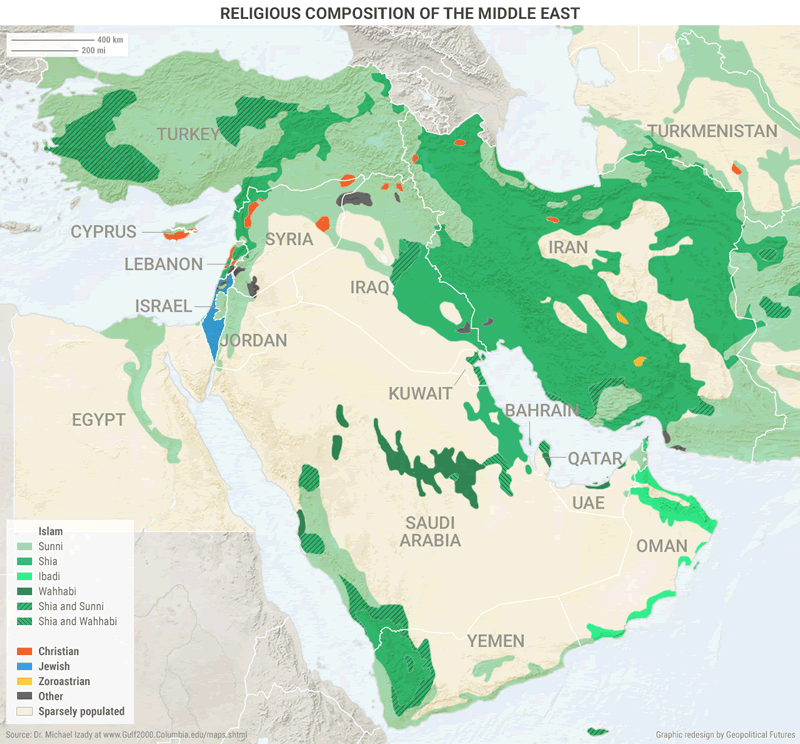Maps That Explain Wars In The Middle East And North Africa
Politics / Middle East Apr 18, 2017 - 05:13 PM GMTBy: John_Mauldin
 BY GEORGE FRIEDMAN : The Middle East and North Africa region runs from the Atlantic Ocean to the Indian Ocean and from Turkey to Yemen. The bulk of the region is along five waterways: The Mediterranean Sea, Red Sea, Persian Gulf, Black Sea, and Caspian Sea.
BY GEORGE FRIEDMAN : The Middle East and North Africa region runs from the Atlantic Ocean to the Indian Ocean and from Turkey to Yemen. The bulk of the region is along five waterways: The Mediterranean Sea, Red Sea, Persian Gulf, Black Sea, and Caspian Sea.
Here are four maps that explain the dynamics and inherited divisions in these regions. (Download my FREE e-book, The World Explained in Maps, to get more insight into the forces shaping our physical and financial worlds.)
Water and Religion Rule the Area
Much of the Middle East is not lived in.

This is largely due to the arid conditions. People in the North African sub-region largely live just south of the Mediterranean coast. The bulk of Egypt’s nearly 90 million people live in the areas around the Nile River.
Most of the people in the Middle East live in the region’s north rim that runs from Iran through Iraq to Syria and into Turkey.
The mostly Arab Middle East is the core of the Muslim world. The map below shows the spread of Arabic-speaking groups in the region. It also shows the spread of Islam.

Founded in 610 in the city of Mecca on the west coast of modern Saudi Arabia, Islam covered the whole Arabian Peninsula along with the Levant. It then crossed the Persian Gulf into Mesopotamia and Persia.
At the same time, it went east into Egypt and from there to the North African coast up to modern Morocco. This served as a launch pad to cross into the Iberian Peninsula.
Arabs ruled many of these lands, save for Persia and Anatolia. They accepted Islam, but kept their unique ethno-linguistic traits. Anatolia only became part of the Middle East due to Ottoman conquest in the early 1500s.
Otherwise, the Arabs under both the Umayyad (661–749) and Abbasid (749–1258) dominions failed to seize lands from the Byzantines north of the Levant.
While the Arabs did push into the Caucasus and Central and South Asia, Persian resurgence in the form of the Safavid Empire in the early 1500s kept Arab control beyond modern Iran. Turkic peoples who converted to Islam held the areas north and northeast of the Middle East.
Growing Divisions Foster the Growth of ISIS
As we’ve discussed before, the current borders of the region were largely drawn up by the British and French in the wake of World War I, and also at the end of the Ottoman Empire.

Yet, it was very divided before the Ottoman conquest in the first quarter of the 16th century.
This goes all the way back to the late ninth century, when the Abbasid dynasty began to fall. Many fighting caliphates, sultanates, and emirates ruled different parts of this region.
So, the many ethnic, sectarian, tribal, and ideological fault lines now are not just due to the present nation-state era.

As it stands, the Arab core of the Middle East has declined—with non-Arab polities strong in the region. The four big local states are (in order of decreasing strength) Turkey, Israel, Iran, and Saudi Arabia.
The Saudi kingdom is the only Arab state still strong after the Arab Spring. It too isn’t doing well given its inherent weakness. Plus, the fact that it holds the weight of (Sunni) Arab regional security. Largely, the region’s Arab states are devolving into non-state actors.
This aids the growth of jihadist groups, one of which is the Islamic State which we've written about at length.
Iran and its Arab Shiite allies are also trying to take advantage of the growing chaos in the region to increase their geopolitical sectarian interests. Turkey is trying to push into the areas once held by the Ottoman Empire.
The only non-Muslim power in the region, Israel, is trying to manage the growing problems on all of its sides.
Grab George Friedman's Exclusive eBook, The World Explained in Maps
The World Explained in Maps reveals the panorama of geopolitical landscapes influencing today's governments and global financial systems. Don't miss this chance to prepare for the year ahead with the straight facts about every major country’s and region's current geopolitical climate. You won't find political rhetoric or media hype here.
The World Explained in Maps is an essential guide for every investor as 2017 takes shape. Get your copy now—free!
John Mauldin Archive |
© 2005-2022 http://www.MarketOracle.co.uk - The Market Oracle is a FREE Daily Financial Markets Analysis & Forecasting online publication.



